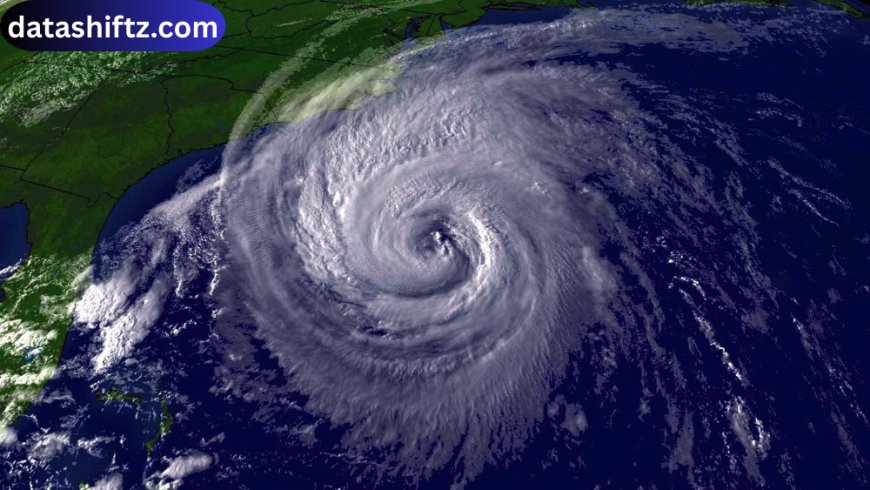Hurricane Tropical Storm: Understanding Nature’s Powerful Weather Systems

Introduction
Hurricanes and tropical storms are among the most powerful and destructive weather phenomena on Earth. These natural events form over warm ocean waters and can unleash devastating winds, torrential rain, and life-threatening storm surges. While both hurricanes and tropical storms are classified as tropical cyclones, the main difference lies in their intensity and wind speeds.
Understanding the science, differences, impacts, and preparedness measures of these storms is crucial for communities in vulnerable coastal regions. In this article, we will explore what hurricanes and tropical storms are, how they develop, their differences, and how we can stay safe when they strike.
What is a Tropical Storm?
A tropical storm is a type of tropical cyclone with sustained wind speeds ranging between 39 and 73 mph (63–118 km/h). These storms are less powerful than hurricanes but can still cause significant flooding, property damage, and disruption.
Characteristics of a Tropical Storm:
-
Forms over warm tropical oceans (usually above 26°C / 79°F).
-
Has organized convection (clusters of thunderstorms).
-
Produces heavy rain and strong winds.
-
Can intensify into a hurricane if conditions allow.
Tropical storms are often the precursors to hurricanes, serving as a warning stage that conditions are favorable for intensification.
What is a Hurricane?
A hurricane is a more intense tropical cyclone with sustained wind speeds of 74 mph (119 km/h) or greater. Hurricanes are categorized into different levels using the Saffir-Simpson Hurricane Wind Scale, which ranges from Category 1 (least severe) to Category 5 (most severe).
Characteristics of a Hurricane:
-
Strong circular winds around a calm eye.
-
Can span hundreds of miles across.
-
Produces storm surges, flash floods, and destructive winds.
-
Can last for days or weeks depending on atmospheric conditions.
Hurricanes are called by different names around the world: typhoons in the western Pacific and cyclones in the Indian Ocean.
Differences Between a Tropical Storm and a Hurricane
While both systems are dangerous, the key difference lies in wind intensity and potential for destruction.
Tropical Storm vs. Hurricane
| Feature | Tropical Storm | Hurricane |
|---|---|---|
| Wind Speed | 39–73 mph (63–118 km/h) | 74+ mph (119+ km/h) |
| Size | Smaller in scale | Larger, can cover hundreds of miles |
| Storm Surge | Moderate coastal flooding | Severe, with high storm surges |
| Rainfall | Heavy, localized flooding | Extreme, widespread flooding |
| Duration | Usually shorter | Can last longer with greater impact |
| Damage Potential | Moderate property and crop damage | Extensive destruction, infrastructure loss |
| Category System | Not categorized | Categorized (1–5) on Saffir-Simpson Scale |
The Saffir-Simpson Hurricane Wind Scale
This scale classifies hurricanes by their sustained wind speeds and potential damage.
Hurricane Categories
-
Category 1 (74–95 mph): Minimal damage, some roof and tree damage.
-
Category 2 (96–110 mph): Extensive roof damage, power outages.
-
Category 3 (111–129 mph): Major damage, widespread flooding.
-
Category 4 (130–156 mph): Catastrophic damage, loss of homes and infrastructure.
-
Category 5 (157+ mph): Complete devastation, uninhabitable areas.
How Do These Storms Form?
Both tropical storms and hurricanes require similar conditions to form:
-
Warm Ocean Waters: Provide the energy source.
-
Moist Air: Helps fuel thunderstorms within the storm system.
-
Low Wind Shear: Allows storms to organize and strengthen.
-
Coriolis Effect: Causes the storm to rotate due to Earth’s spin.
When all these factors align, a disturbance in the tropics can develop into a tropical storm and later intensify into a hurricane.
Impacts of Hurricanes and Tropical Storms
These weather systems affect millions of people worldwide every year. Their impacts can be devastating, both in the short and long term.
Common Impacts Include:
-
Strong Winds: Uproot trees, destroy homes, and damage power lines.
-
Storm Surges: Push seawater inland, flooding coastal communities.
-
Heavy Rainfall: Leads to flash floods and landslides.
-
Infrastructure Damage: Roads, bridges, and airports often suffer heavy damage.
-
Economic Disruption: Billions in damages to property, crops, and industries.
-
Humanitarian Crises: Loss of life, displacement of people, and health risks.
Preparedness and Safety Measures
Preparedness is the best defense against tropical storms and hurricanes. Communities, governments, and individuals can reduce risks by taking proactive steps.
Safety Tips During a Storm
-
Stay informed through official weather updates.
-
Prepare an emergency kit (water, food, flashlight, first aid).
-
Have an evacuation plan and know safe routes.
-
Reinforce homes with storm shutters or plywood.
-
Avoid floodwaters and downed power lines.
-
Store important documents in waterproof containers.
-
Charge devices and keep backup batteries.
-
Follow government evacuation orders immediately.
-
Secure outdoor objects that may become projectiles.
-
After the storm, avoid returning until authorities declare it safe.
Hurricanes and Tropical Storms in History
Some of the most notable storms have left a lasting impact on global communities:
-
Hurricane Katrina (2005): Devastated New Orleans, USA.
-
Hurricane Maria (2017): Severe damage in Puerto Rico.
-
Cyclone Idai (2019): Affected millions in Mozambique, Zimbabwe, and Malawi.
-
Typhoon Haiyan (2013): One of the strongest storms ever recorded, struck the Philippines.
These events highlight the urgent need for climate resilience and better disaster management.
The Future of Storms in a Changing Climate
Climate change is intensifying tropical storms and hurricanes. Warmer oceans and rising sea levels mean stronger winds, heavier rainfall, and more destructive storm surges. Scientists warn that while the frequency of hurricanes may not drastically increase, their intensity and destructiveness will likely worsen.
Global cooperation, improved forecasting technology, and stronger infrastructure are critical to mitigating the impacts of future storms.
Conclusion
Hurricanes and tropical storms are powerful reminders of nature’s force. While they differ in strength, both can cause severe destruction and threaten lives. Understanding their differences, impacts, and preparedness strategies is essential for survival and resilience. As climate change continues to shape global weather patterns, adapting to and preparing for these storms will be more important than ever.
Each storm serves as a test of human resilience and scientific progress. By combining awareness, preparation, and innovation, we can reduce risks and safeguard communities against the challenges of these formidable natural forces.





























